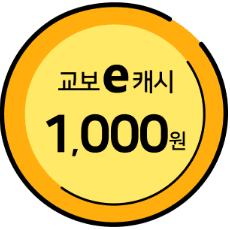학술논문
Монгол, солонгос хэлний “гар”-тай нийлэмж үгийн төлөөллийн онцлог
이용수 10
- 영문명
- Representational features of the compound word with “hand” in Mongolian and Korean languages
- 발행기관
- 한국몽골학회
- 저자명
- 김은정(eun jung Kim)
- 간행물 정보
- 『몽골학』제76호, 43~70쪽, 전체 28쪽
- 주제분류
- 인문학 > 기타인문학
- 파일형태
- 발행일자
- 2024.02.28
6,160원
구매일시로부터 72시간 이내에 다운로드 가능합니다.
이 학술논문 정보는 (주)교보문고와 각 발행기관 사이에 저작물 이용 계약이 체결된 것으로, 교보문고를 통해 제공되고 있습니다.

국문 초록
환유적 표현을 통해 형성된 의미는 실제 사람이나 사물을 명명하는 것이 일반적이다. '손'은 물건 집기, 물건 가리키기, 도구 사용과 같은 활동에 자주 사용됩니다. 손은 [THE PART IS IN THE WHOLE]이라는 환유적 개념에 기초하여 손을 신체 부위에 가까이 대는 것으로 사람을 지칭할 수 있다. 그래서 Kövecses. Z.(1996:337-345)가 지적했듯이 손은 “행동/행위”, “사람”, “지능” 및 “통제”를 나타낼 수 있다.인지언어학 이론을 바탕으로 몽골어와 한국어의 틀 안에서 인간의 오감(손)을 통해 추상화된 복합어를 비교하고, 이들 언어에서 단어의 과도기적 의미가 어떻게 형성되는지를 비교하였다. “손”은 “사람, 관계, 통제, 소유, 권력” 등 다양한 행위의 표현을 나타낸다. 표현의 분류에 있어서는 2가지 범주가 부분으로 전체를, 부분으로 전체를 나타내는 것으로 생각되지만, 우리 자료에는 부분을 전체로 표현한 사례가 없기 때문에 전체를 부분으로 사용하고 있으며, 표현은 실제 표현과 추상 표현으로 구분됩니다. (1) 몽골어에서는 오감기관의 '손'으로 사람을 표현하는 것이 일반적이지만, 사람의 계급과 계급을 나타내기 위해 “크다, 오른쪽, 크다”와 같은 악센트 단어의 도움을 받아, “오른손, 큰 손, 긴 손, 황금의 손”은 한국어보다 더 넓은 의미를 가지고 있습니다. (2) 다양한 감정상태를 추상적으로 표현하는 복합어로 분노를 표현하는 경우, '손'이라는 단어와 결합된 복합어가 더 많이 관여하며, '손이 긴장하다, 손이 가렵다, 손이 가렵다' 등의 말로 표현된다. 움직인다'는 몽골어와 한국어에서는 같은 의미를 갖고 있지만 그 감정의 구체적인 내용을 나타내기까지 합니다. 몽골어 'гар'와 한국어 [손]의 어휘적 특징은 정착민과 유목민의 문화와 사고방식의 차이를 나타낸다.
영문 초록
In this study, metonymic expression of ‘hand’ among the five human senses was studied in the context of Mongolian and Korean language.
Based on the theory of cognitive linguistics, we compared compound words abstracted through the five human senses(hands) in the context of Mongolian and Korean languages, and how the transitional meaning of the word is formed in these languages. “Hand” shows the expression of many behaviors, such as “person, relationship, control, ownership, power”, etc. Regarding the classification of representation, it is considered that 2 categories represent the whole by parts and the whole by parts. Representation is classified into real and abstract representation.
(1) It is common in Mongolian language to represent a person with the “hand” of the five sensory organs in real representation, but with the help of accent words such as “big, right, big” to indicate the rank and rank of the person, “right hand, big hand, long hand, big hand” “Empty” has a wider meaning than the Korean language.
(2) When expressing anger with compound words whose abstract representation indicates various emotional states, compound words with the word “hand” are more involved, and are manifested in words such as “the hand is tense, the hand is itchy, the hand is moving”, although they have the same meaning in Mongolian and Korean languages. even indicating the specifics of that emotion.
목차
1. Оршил
2. Төлөөллийн тухай ойлголт
3. Бодит төлөөллийн харьцуулал
4. Хийсвэр төлөөлөл харьцуулал
5. Дүгнэлт
키워드
해당간행물 수록 논문
참고문헌
관련논문
인문학 > 기타인문학분야 NEW
- 장-뤽 낭시를 경유한 클레르 드니의 여정 - ‘신체-지리학’ 영화, 생태적으로 그려내기
- 19세기 프랑스 그랑 오페라 초기작에 나타난 이중적 정치성과 예술적 가치 연구
- 파리시의 새로운 생활권 녹지정책에 나타난 효용적 가치에 관한 연구
최근 이용한 논문
교보eBook 첫 방문을 환영 합니다!

신규가입 혜택 지급이 완료 되었습니다.
바로 사용 가능한 교보e캐시 1,000원 (유효기간 7일)
지금 바로 교보eBook의 다양한 콘텐츠를 이용해 보세요!



